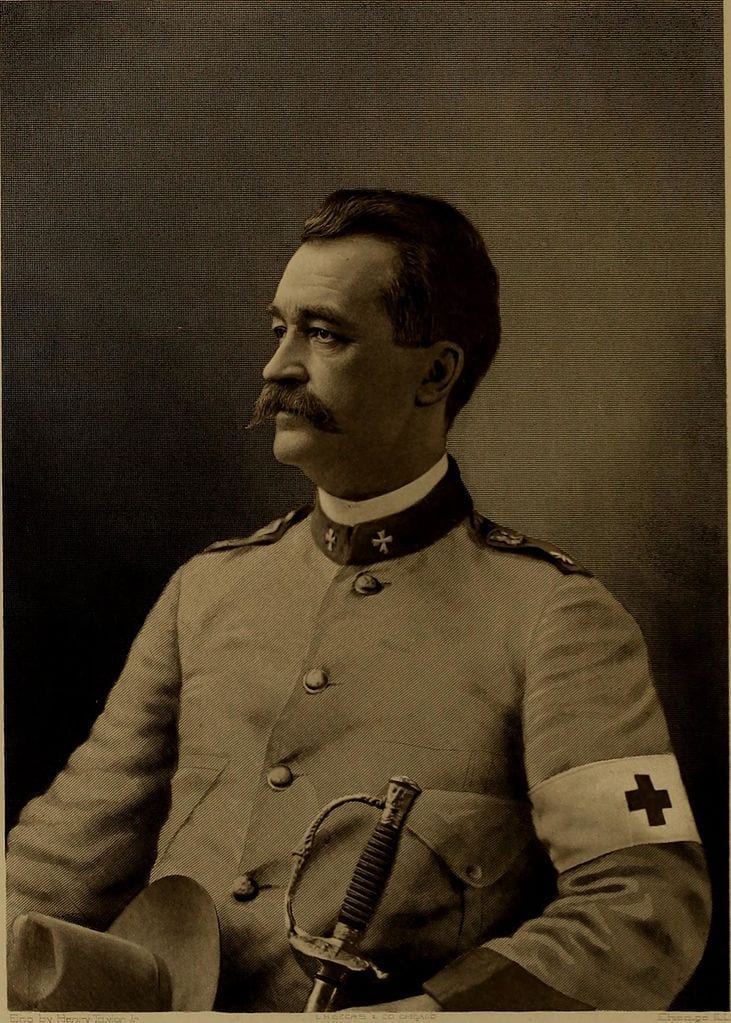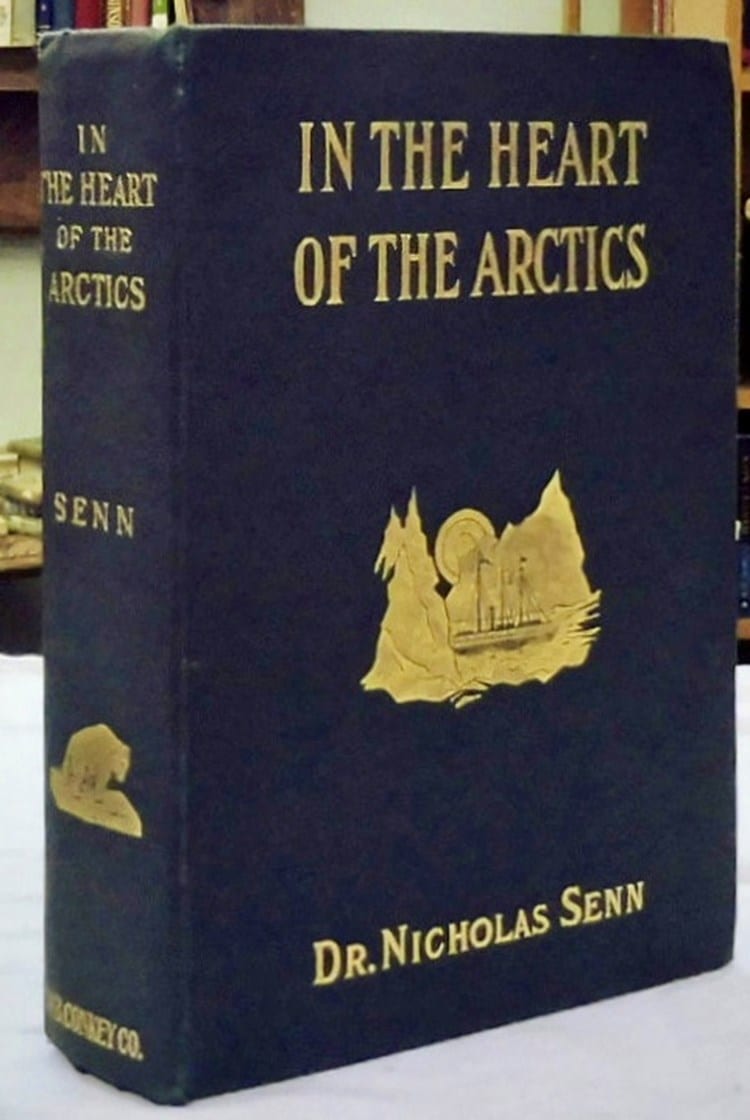
Nicholas Senn was a man with an extraordinary capacity for work, an innovator, always trying new methods, even new experiments that he first conducted on himself. Born in 1844 in St. Gaul, Switzerland, he came to America when he was eight years old. His family settled in Ashford, Fond du Lac County, Wisconsin, then at the outskirts of civilization. He grew up on a farm, is believed to have taught elementary school for one year, then decided on a medical career.
In 1865 he entered Chicago Medical College—later the medical school of Northwestern University—and graduated with honors in 1868 with a thesis on Digitalis Purpurea. He served as an intern at Cook County Hospital and remained there for five years before returning to Wisconsin to practice country medicine in Elmore (formerly Ashford Station). In 1874 he moved his practice to Milwaukee, became attending physician in charge of the Milwaukee hospital, and was elected president of the Wisconsin State Medical Society. While in practice he established, somewhat secretly, a laboratory connected to his office building. There he continued his earlier interest in zoology and botany by working at night and dissecting guinea pigs, rabbits, sheep, calves, and also human cadavers. As a result of his studies, he published on air embolism, fractures of the femur, cysts of the neck, surgery of the pancreas, intestinal obstruction and fistulas, and other topics.

At the hospital, he operated first on regular hospital wards with a screen placed around the bed so that other patients could not see what was happening, and later in a specially designed operating room in a new building of the hospital. In 1877 he went to Germany for one year to study the budding new discipline of bacteriology, and he received a second medical degree from the University of Munich. At first he adopted Joseph Lister’s carbolic spray to prevent infections, but later preferred aseptic methods such as operating in boiled cotton gloves. His reputation spreading, he developed a large surgical practice, both public and private, and carried out many original operative procedures, including rectal insufflation of hydrogen gas to diagnose visceral injuries of the gastrointestinal tract. He also designed many surgical instruments, of which the Senn retractor is best known.

Around 1880 Dr. Christian Fenger recruited him to work part-time in Chicago. For seven years he traveled between Milwaukee and Chicago to carry out his clinical and teaching responsibilities. He became chairman of the College of Physicians and Surgeons (1890), professor of surgery at Rush Medical College, and later chairman of the department of surgery. In 1893 he moved to Chicago. He was a surgeon on the staff of St. Joseph’s, Presbyterian, and Passavant hospitals. In 1892 he was appointed Surgeon General of Illinois by the governor of the state.
In 1891 Senn founded the Association of Military Surgeons of the United States and was its president for two years. As chief surgeon of an army corps during the Spanish-American War, he took part in the siege of Santiago in Cuba in 1900. He was president of the American Medical Association in 1897–98, a delegate to International Medical Congresses, and an honorary member of medical and surgical societies in the US, Mexico, Glasgow, Manila, Vienna, Budapest, Norway, Sweden, and Japan.
Senn authored twenty-five books and over three hundred publications. He wrote about tuberculosis of the bones, joints, and the genito-urinary organs (male and female); also about tumors, intestinal obstruction, cancer of the pancreas, and visceral injuries. He published guides for surgical nurses and general practitioners, books on surgical bacteriology, on surgical instruments, and on surgery in war. He visited every state in the United States and most countries of the world, writing books about his travels. He went to Siberia, to Tahiti after a journey across the Pacific of fifteen days, to South America, the West Indies, the Arctics, India, and the local National Parks, and also published his experiences in war. He died of a heart attack in January 1908 and is widely remembered for his achievements. In Chicago a surgical auditorium, a library, and the Nicholas Senn High School remain to this day a testimonial to the memory of this great man.
Bibliography
- Editorial. The death of Nicholas Senn. JAMA 1908; 2: 125.
- Hamilton S. The great master of abdominal surgery. Wisconsin Medical Journal 1992; 91:245.
- King, A.F.A. Nicholas Senn. Proceedings of the Washington academy of Sciences 1908;10 232
- Lichtenstein ME. Nicholas Senn. Quarterly Bulletin of the Northwestern University Medical School 1961; 35: 358.
- Natvig, P: Nicholas Senn of Milwaukee and Chicago. Plastic and Reconstructive Surgery 1978; 61 (2):167.

Leave a Reply